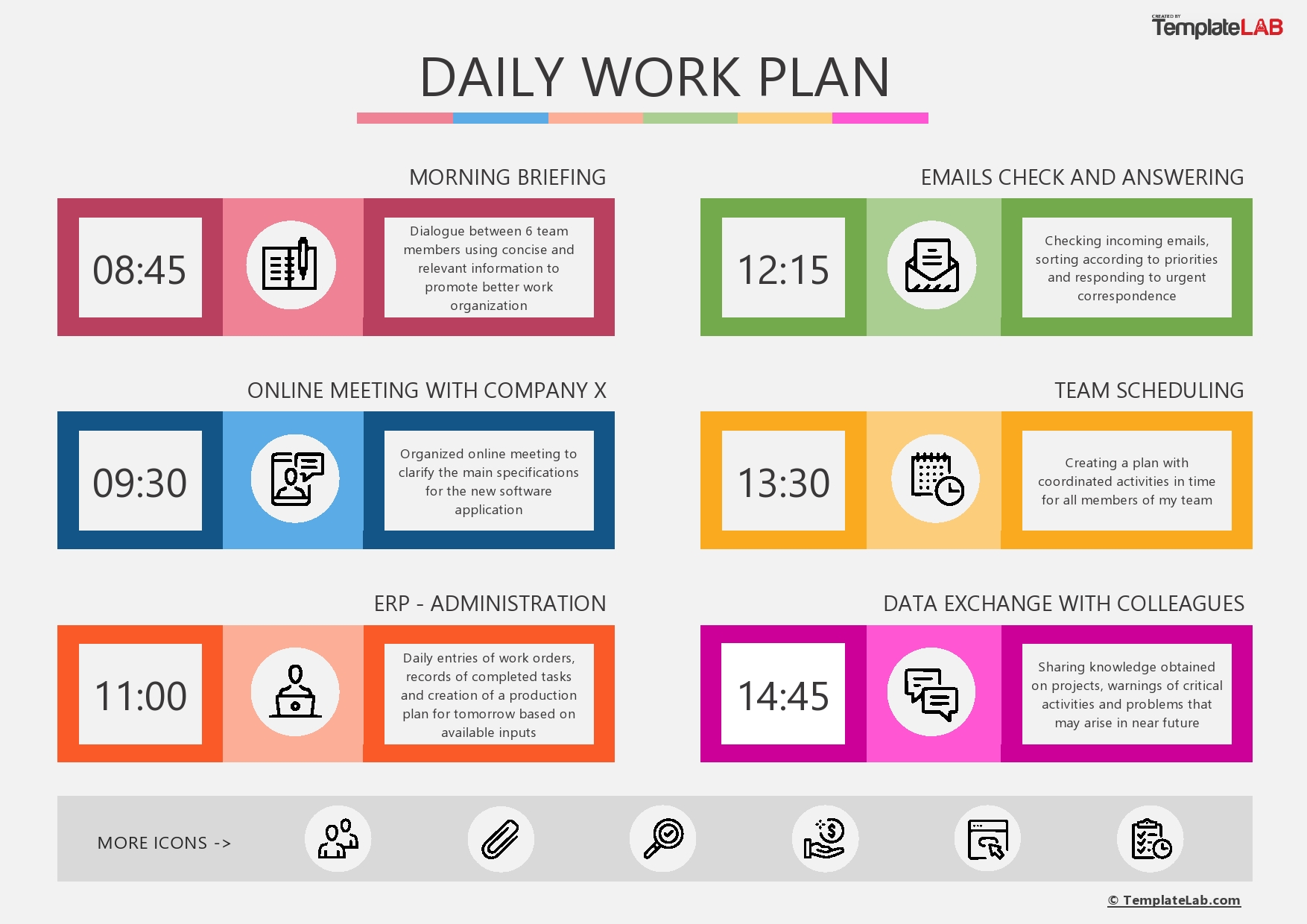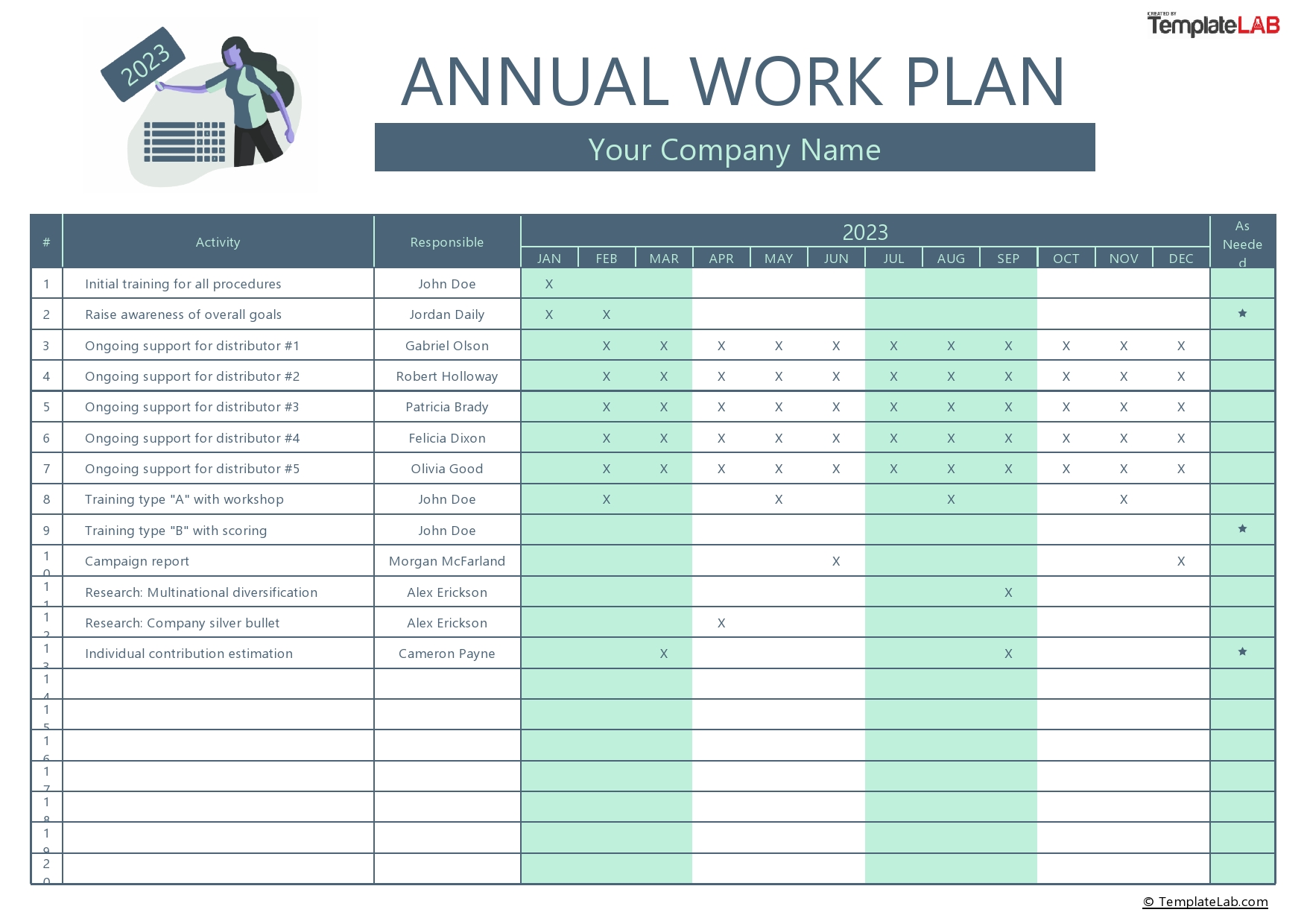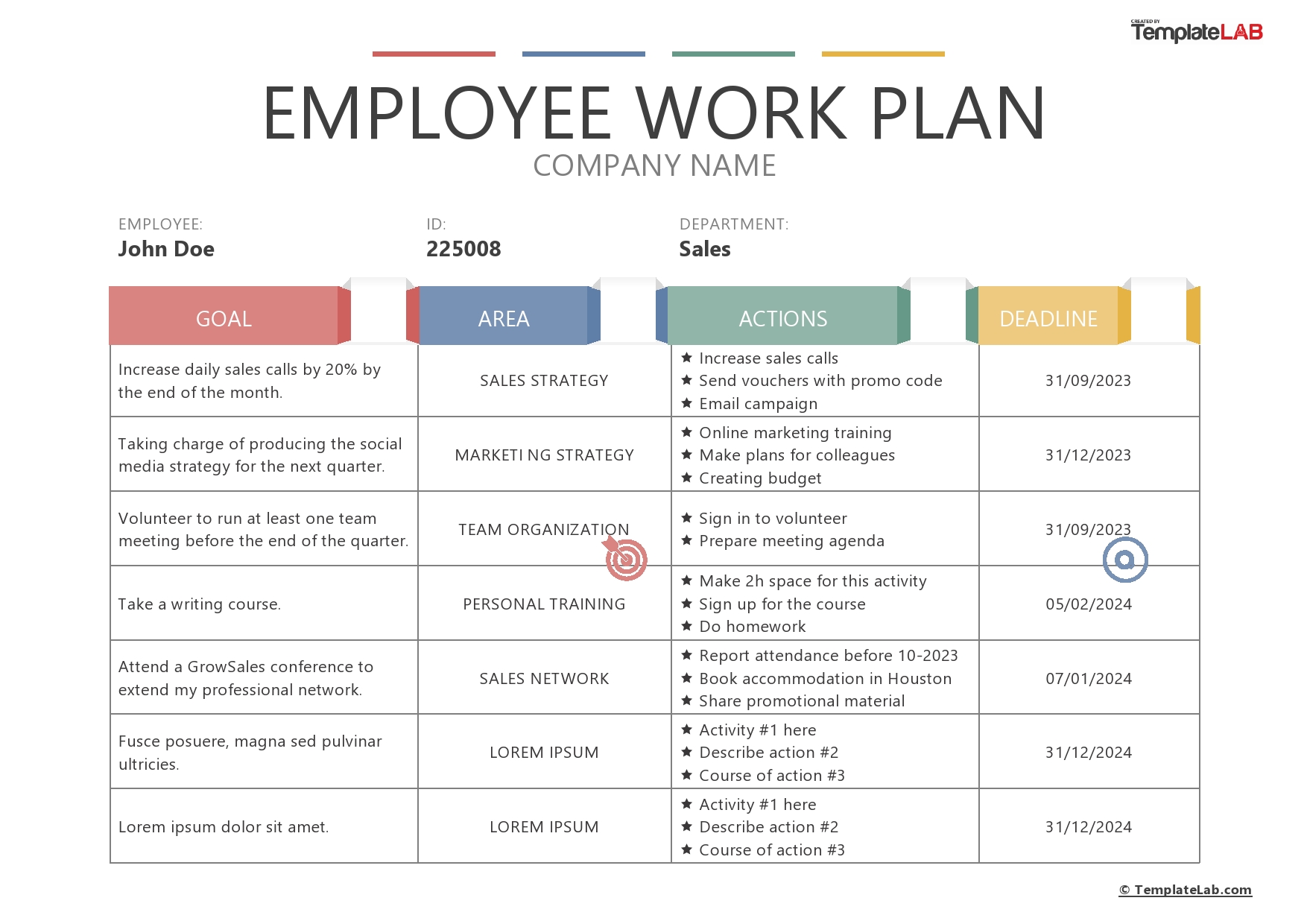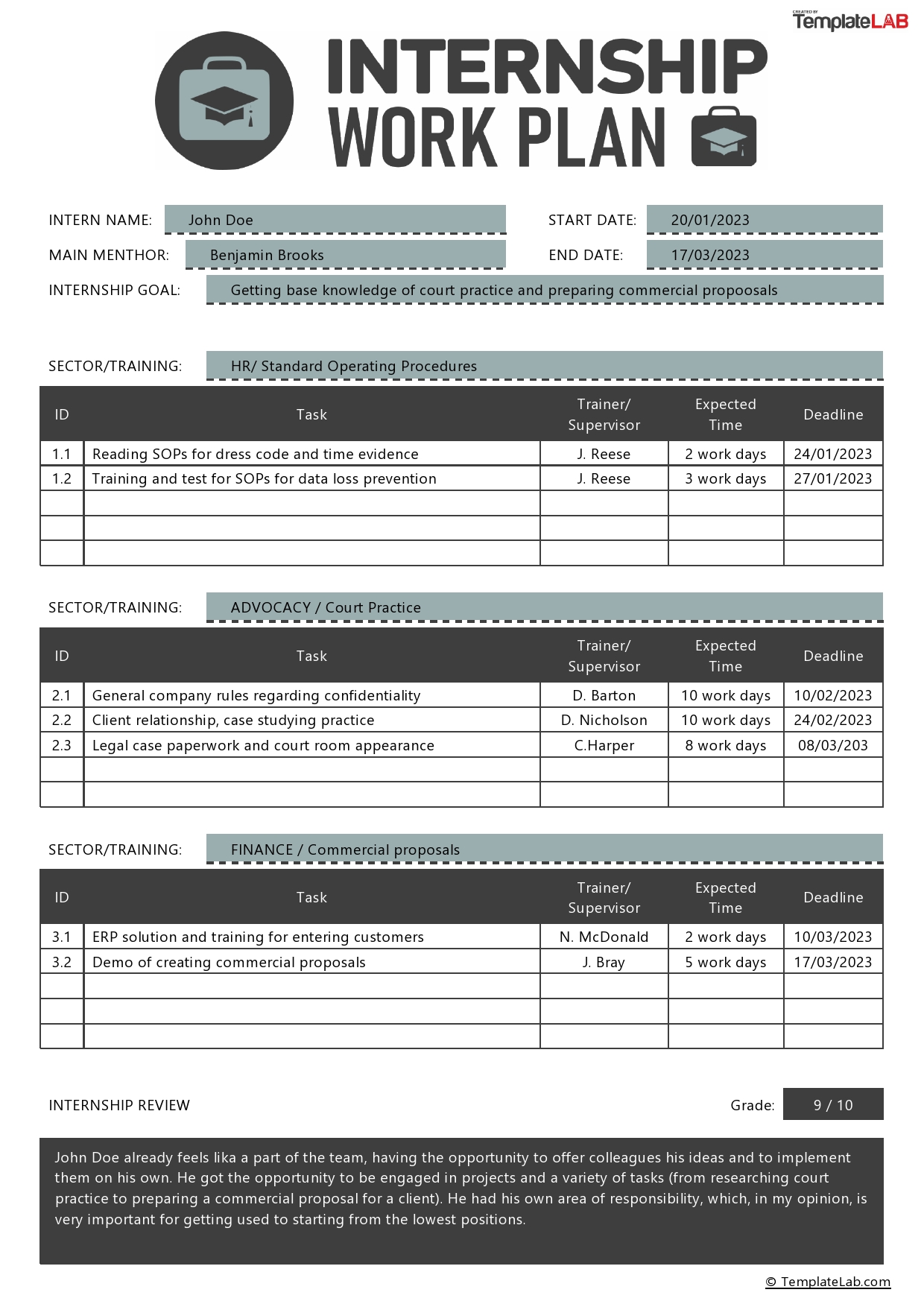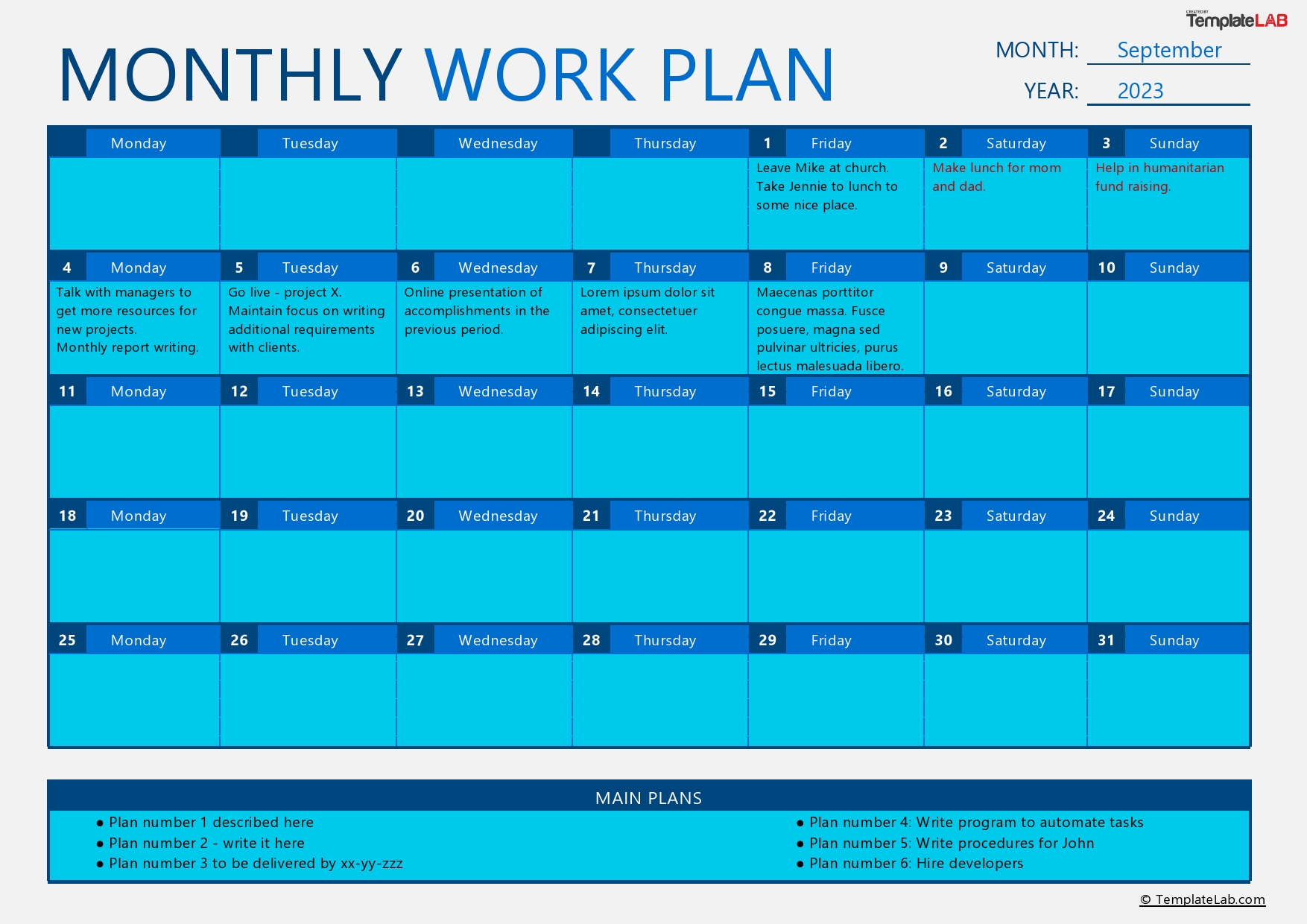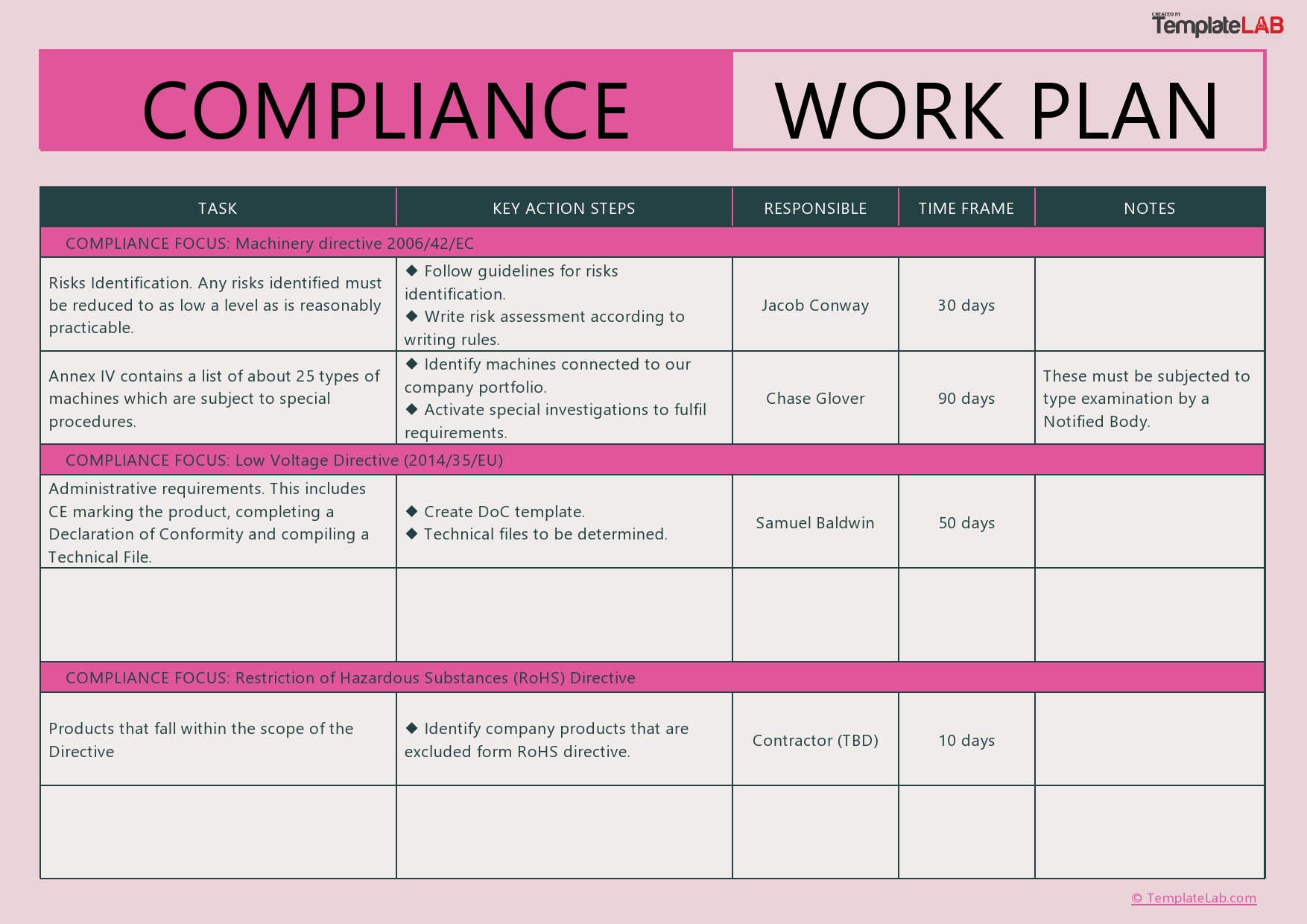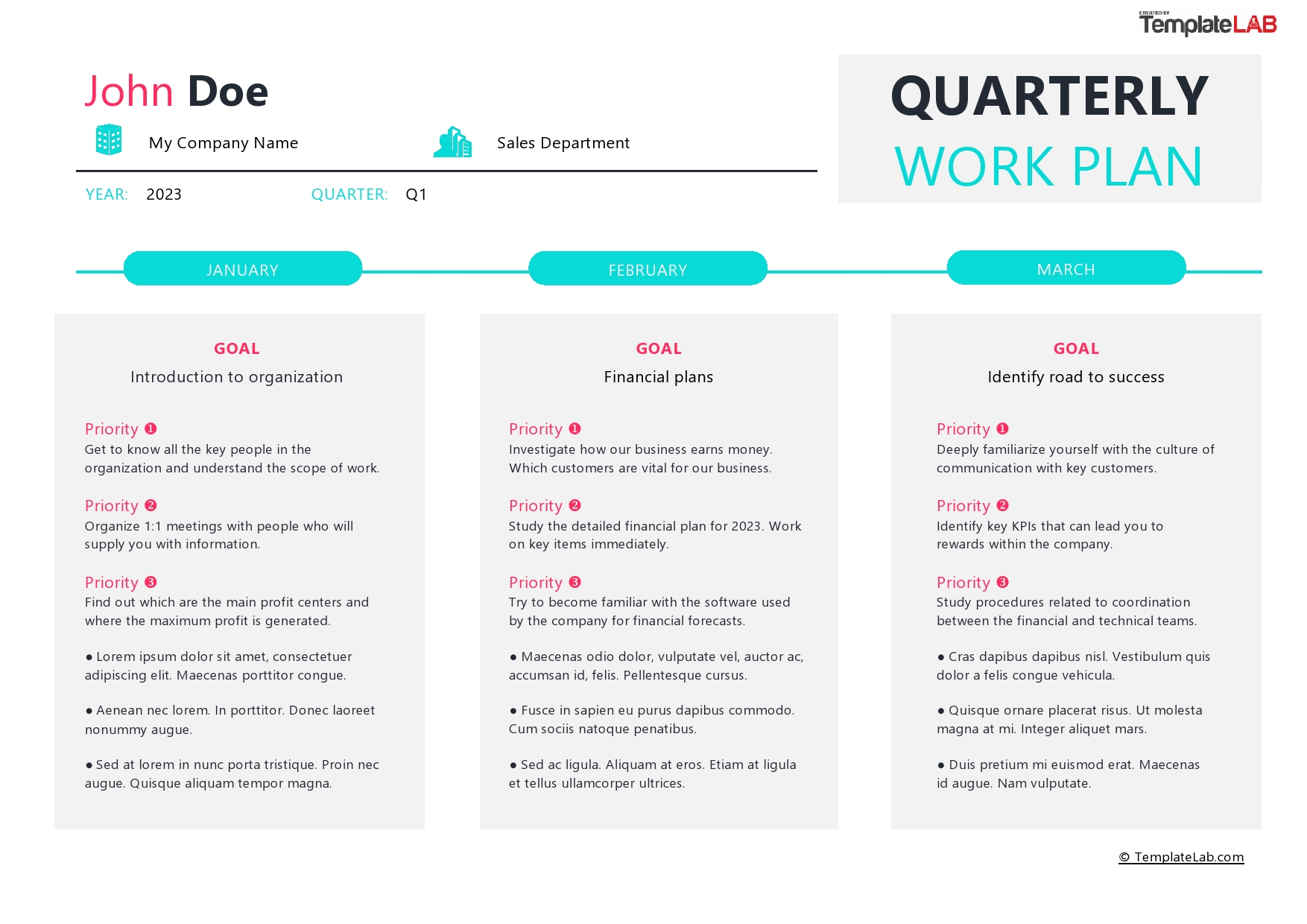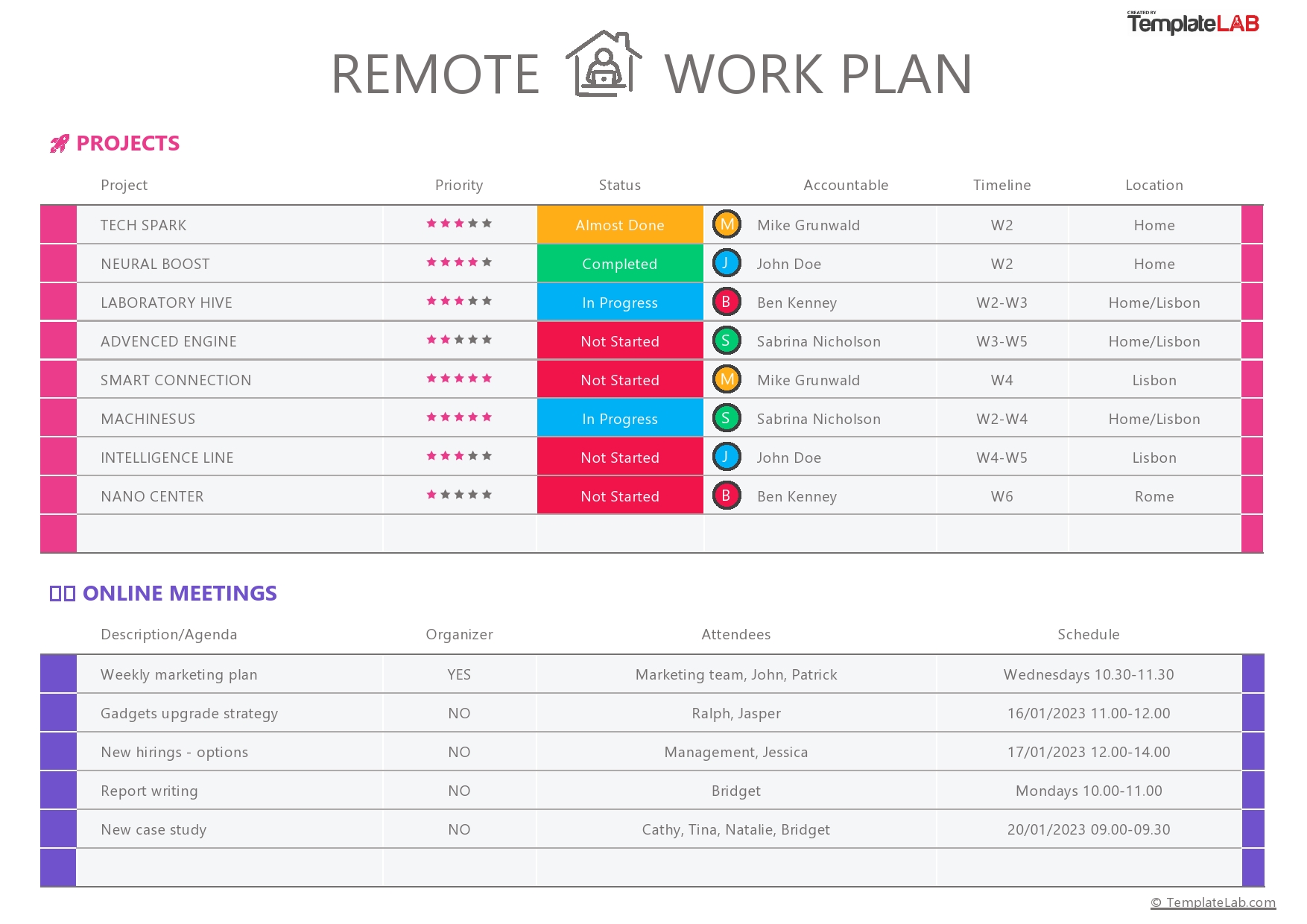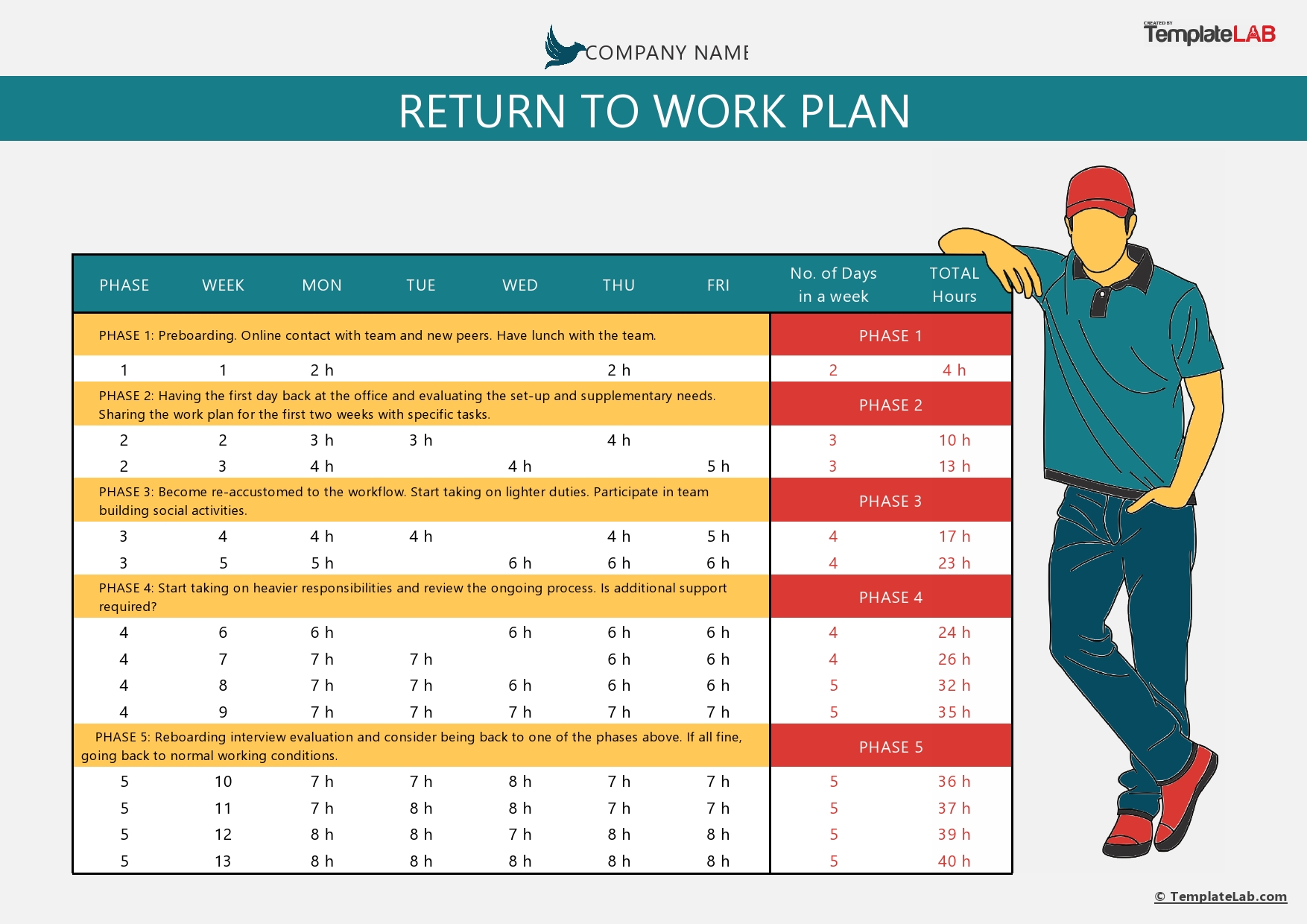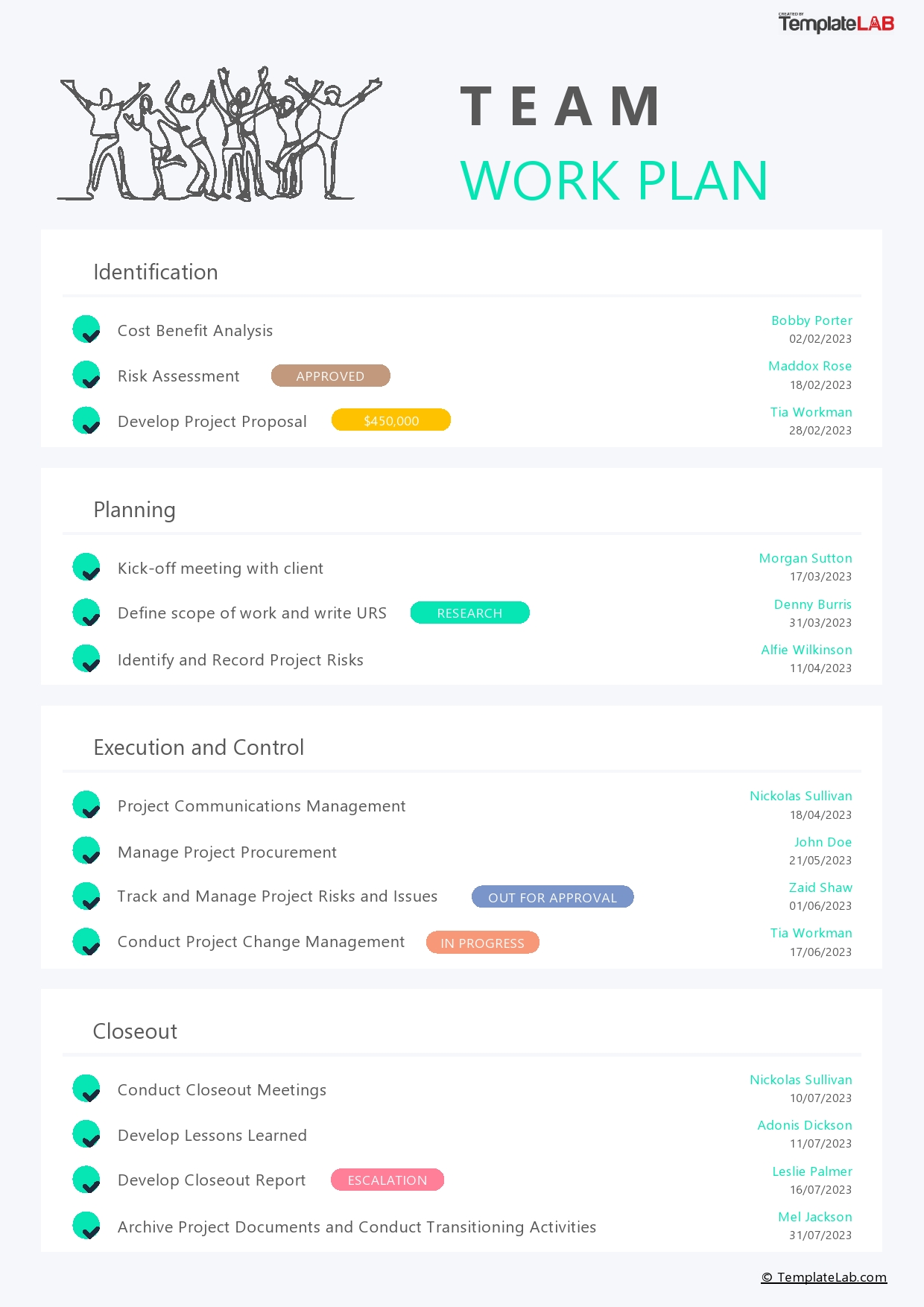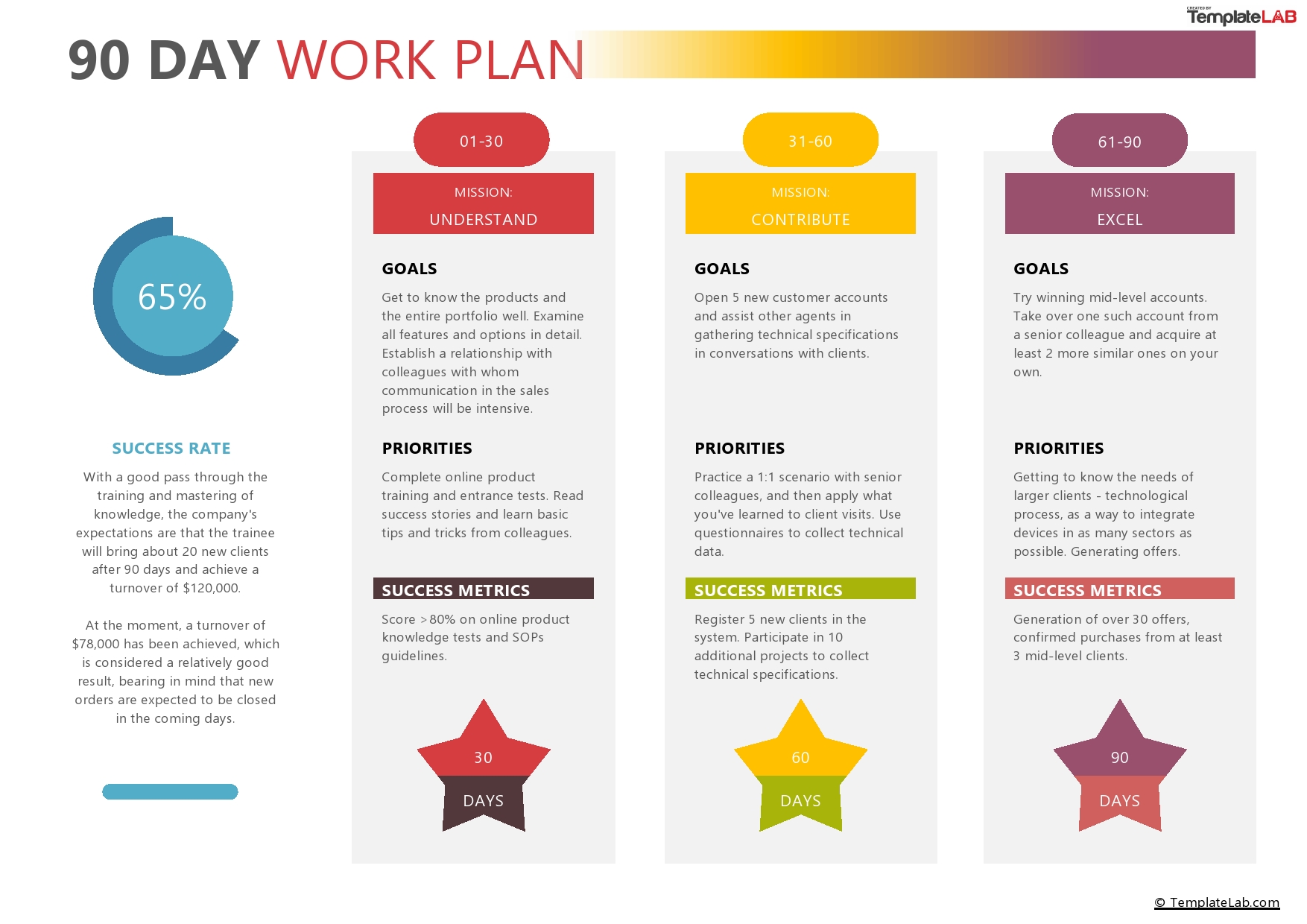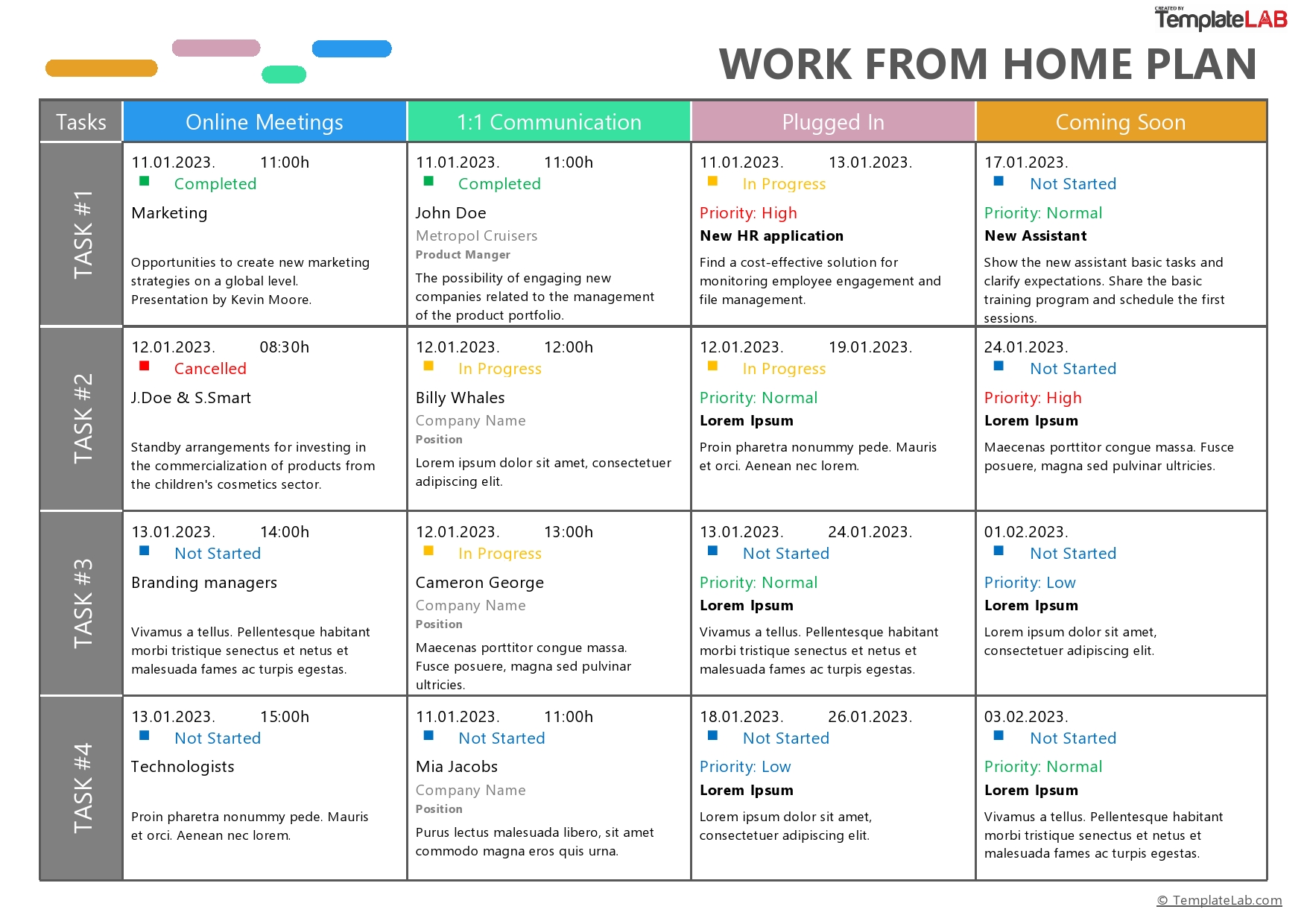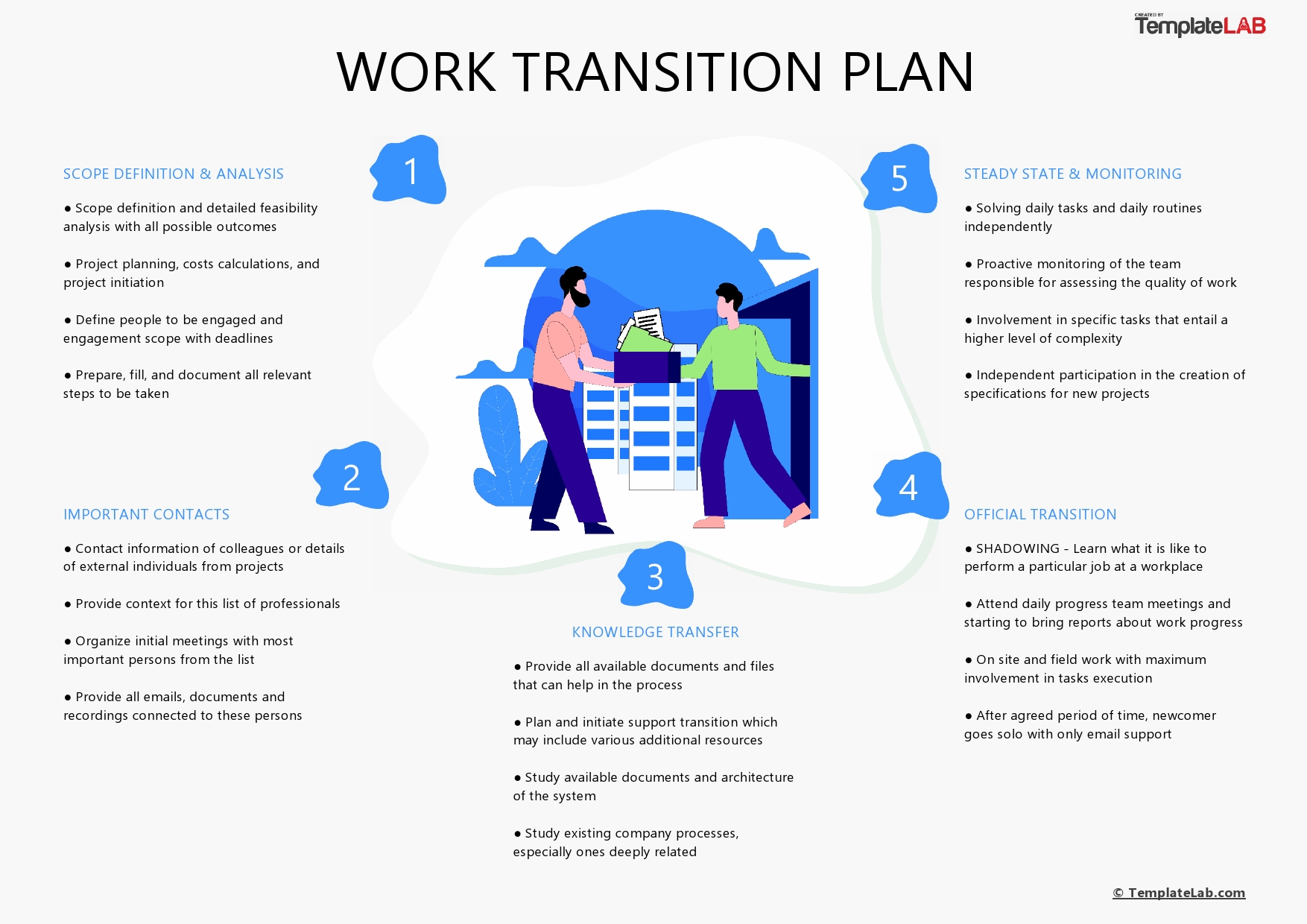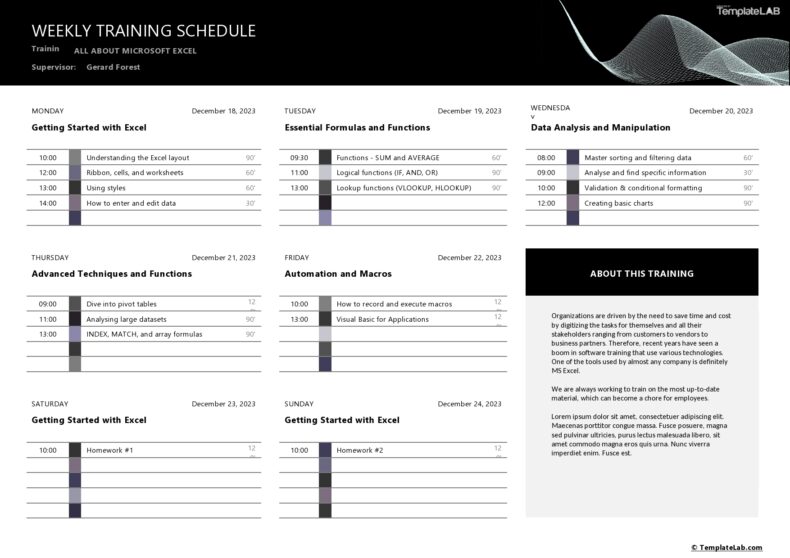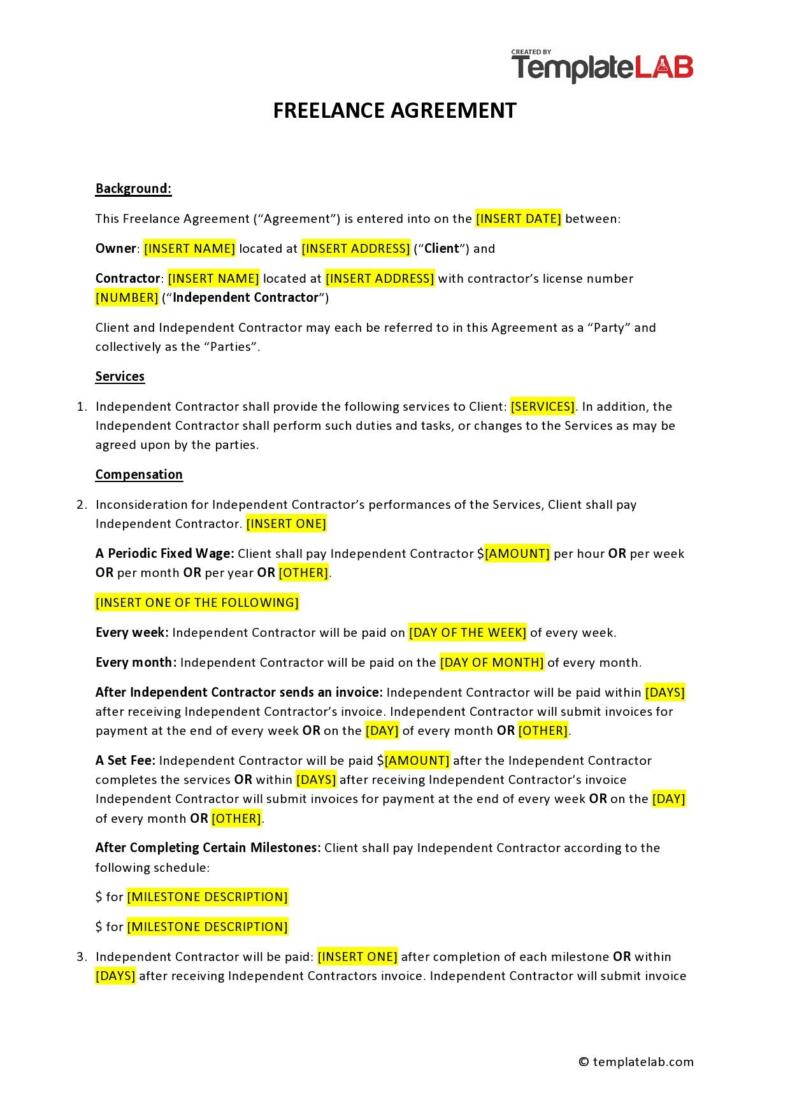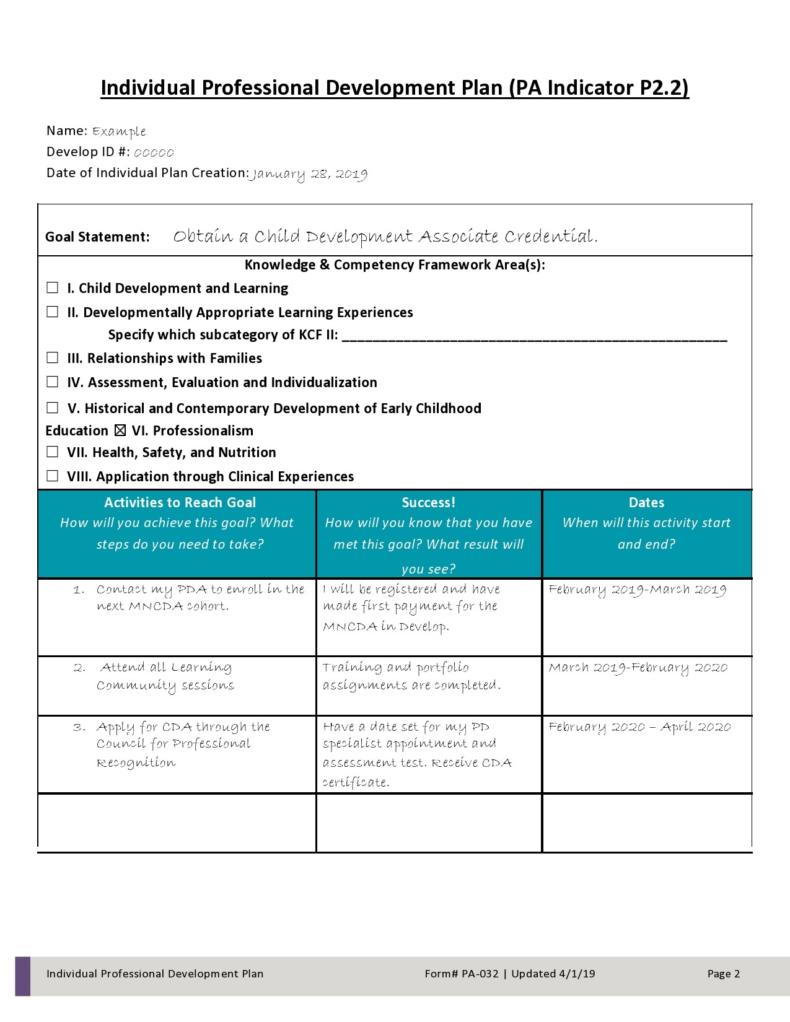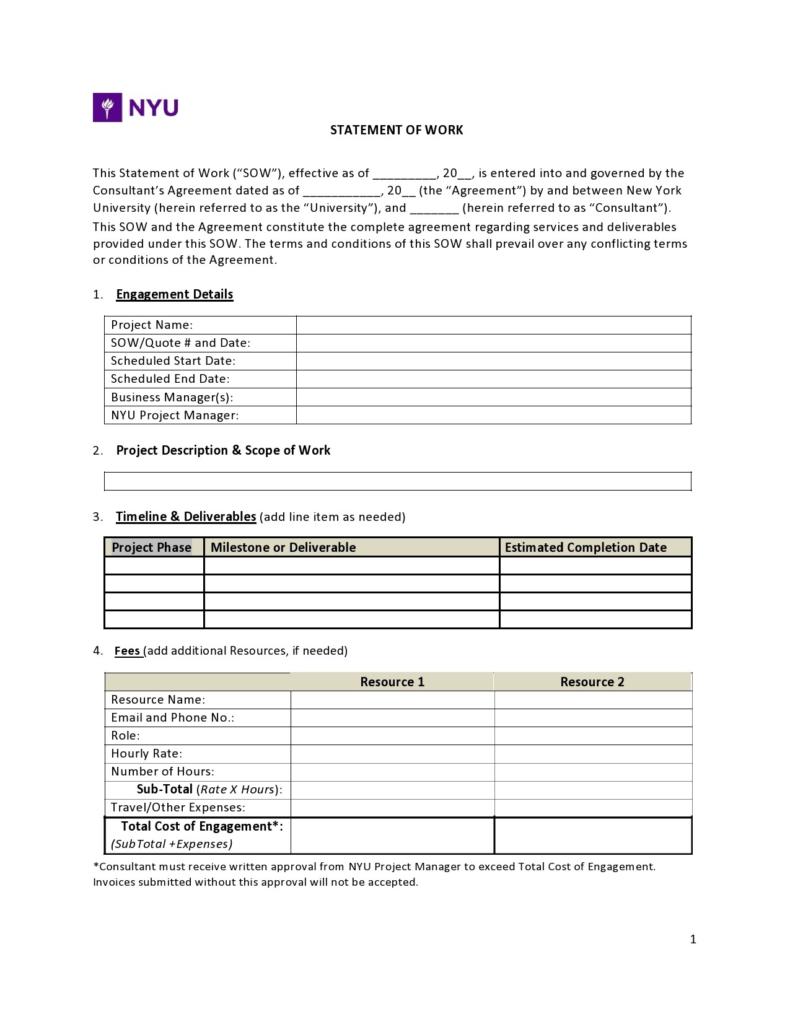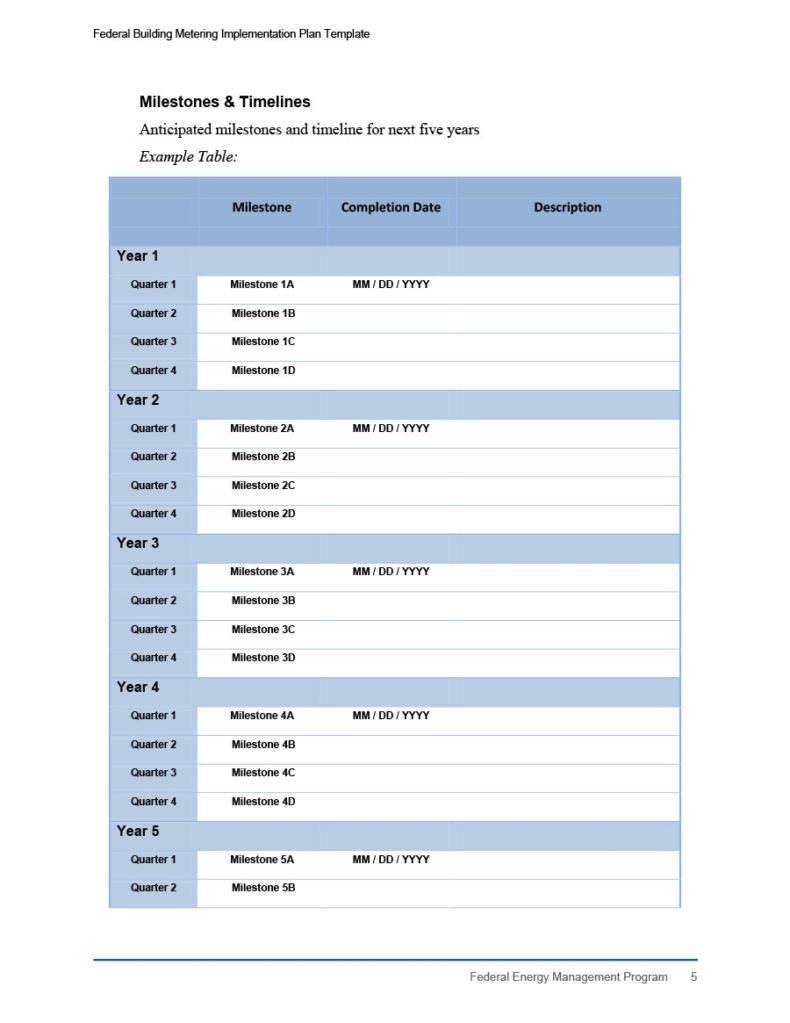If you’re preparing to launch a new product or manage a big project, having all your information in one document can make your life much easier. A detailed work plan helps you plan your goals and divide tasks into more manageable parts.
A unique work or project planning template outlines the steps necessary to complete a project or task on time. It allows users to streamline and organize a project, improving efficiency throughout the process.
Table of Contents
That said, the structure of work plan templates and the tools used to make one vary. This article will cover a few ways to create a unique work plan template that suits your business needs.
Free Work Plan Templates
What is a Work Plan
A work plan is a simple project plan template that works as an organizational tool. It specifies the processes required for a project and sets reasonable completion dates.
This type of project planning aims to establish a visual reference for the project’s goals, objectives, tasks, and team members responsible for those tasks.
Project planners encourage everyone involved in the project to actively participate and communicate. Project managers can develop an overall project work plan and then create phase-specific individual work plans for complex projects with several phases of completion.
A work plan template helps save time as you switch between projects. Your template can be modified to add, remove, or replace team members or tasks. It can also include customized prompts for setting objectives or goals.
Typically, a work plan template includes the following areas:
- Objectives
- Goals
- Group duties
- Individual responsibilities
- Project phase deadlines
- Budget for the project
- Potential setbacks
Work Plan Samples
Why Is a Work Plan Necessary
During the project management phase, a project work plan template serves as a road map for the full project execution.
It creates structure and guarantees the support of important stakeholders, relevant departments, accountable leaders, and more.
In addition, it assists in managing the expectations of all of the above-mentioned parties. Like how project plan templates direct project teams, work plans do the same.
They clarify specific tasks and outcomes for each team member, paving the way for accountability and successful collaboration.
What are the Different Types of Work Plans
Work plans come in many different shapes and sizes. Work plans can be adapted to suit the roles of individuals responsible for executing them. That said, the work plan’s actual content may differ depending on the project’s intended use.
Understanding project specifics and duties allows you to establish team roles, lower the possibility that you and your team will go over budget, and increase the likelihood that you will accomplish your goal within the given time frame.
As you choose the form of work plan to create for your present project, take into account the following typical types:
- Work Plan for Employees
This work plan includes the team members and personnel who will be working on the project. It can provide guidance and detailed tasks for each individual role in the project.
This strategy can also help your staff members comprehend their present and future roles and their interactions with their coworkers.
It can be used by small groups to establish objectives, track progress, adhere to deadlines, and stick to the project schedule to finish the project. Work plans for employees could include:
The project’s objective.
Predicted budget for the project.
The supplies and costs needed.
Estimated due dates. - Work Plan for Managers
To discuss team activities, evaluate accomplishments, and set future objectives for each department or team, a project manager from any department within an organization may construct work plans for their departments.
It could include short-term objectives and metrics that management can use to monitor progress, like a thorough budget, performance data, and project or department development details.
This work plan may include the following to help project management by providing a wider scope:
How the project is advantageous to the company.
The company’s complete descriptions of project expenses.
Predicted and actual budgets.
Project timeline with all the tasks that need completing.
Statistics demonstrating how the business can profit (more sales, visibility, or traffic).
How to Create a Work Plan Template
After determining which kind of work plan best suits your needs, you should consult with those who will be assisting in its execution. To establish and explain your long-term and short-term goals, you can decide if you wish to create a number of work plans or stick to one.
Following these steps will help you create a work plan that will assist your team in organizing its goals.
- Establish objectives and goals
Setting specific goals and objectives is the first stage in developing a work plan. Your objectives should be clear and measurable, focusing on the bigger picture.
For instance, if you’re launching a new product, your objective might be to attract 100,000 website visitors over the course of the following six months. Launching a fresh social media campaign could be one of the objectives for that goal. - Define the duties of the team
Assign team members to lead each effort after you’ve determined the goals. A leader should be appointed if a team is being formed to carry out certain tasks.
Assign hierarchy levels if the project is vast and complex with numerous teams. A project manager could be in charge of multiple team leaders, meeting with just those people and concentrating on the overall development to keep a project on track. - Create project schedules
Setting deadlines helps teams stay on target and controls costs. You can set a realistic deadline for completing your task and be willing to adjust your team’s plan if there is a chance to adopt a more efficient technique.
When drafting your business plan, take into account the SMART goals principles, which stand for:
Specific: Be sure to set clear and explicit goals, objectives, and next steps.
Measurable: This is where you will state how your project progresses toward your objectives.
Attainable: Your team can actually complete your goals and objectives within the allotted time limit if they are deemed to be attainable.
Relevant: Match your values and long-term aspirations with the target, task, and goal.
Time-specific: Your plan allows you to set priorities for your time since it has a realistic finish date. - Create a budget
It’s time to estimate expenses and develop a budget after you are certain of the resources your job plan will require. Simply decide on a measurement unit for your labor, materials, and other resources to do this, and then give each one an estimated price.
Obtaining quotations from other vendors may be part of your work plan. You should allocate distinct duties to the various teams and break down expenditures in your budget.
You can assess your expenses and ascertain whether the team is on budget by reviewing them each time a team completes a task or reaches a new milestone.
If the team is running behind schedule or over budget, you can reallocate resources from other departments or postpone the project altogether.
With a thorough work plan, you can identify areas where your team needs extra resources and adjust your plans accordingly. - Outline any risks, restrictions, and suppositions
The more information you have regarding restrictions and potential hazards, the better your team can carry out its duties to create deliverables and accomplish the project’s goals and objectives. Remember that your work plan template is the action plan that will direct your project.
During the project, it’s possible that some team members will take a few sick days, there will be unforeseen jobs to complete, or certain tools will break down, necessitating the expenditure of more funds.
Any potential risk that could develop into a full-blown constraint and affect the fulfilment of deliverables or even the project goals and objectives should be considered, regardless of the project limitations.
Project Work Plan Templates
3 Steps to Create a Work Plan Template
- Plan ahead
Every transformation begins with an idea. The concept, though, simply isn’t strong enough to persuade anyone that it’s a good one. So now begins the bulk of a product manager’s labor:
Create a document of initiative – This will serve as the main document for your work plan, where you will compile all pertinent notes and data. This document includes every element of the initiative, including any future communications or updates related to the entire project plan.
Create a user story or something similar – Here, you must provide your project, the intended user group, and the value it offers the company. This will lay a strong basis for the remaining work you’ll perform using your work planning template.
Check whether the concept fits the present product’s core principles and purpose – It must address current goals and OKRs and suit the existing product vision and strategy. Without it, it will serve as a detour from the existing course. A well-written work plan can be a foundation for defining the period’s OKRs.
Pick the product metrics you want to address – It’s time to connect your solution to your product metrics and goals after you’ve confirmed the context. It’s acceptable to have suggestions that improve product quality rather than directly affect any KPIs in order to promote long-term retention.
Conduct analysis and prototype discovery – Even though it’s not always practicable, make an effort to look up the answers to the following questions:
Was this solution evaluated by competitors or potential competitors in other product areas?
Do we have the appropriate project management software?
Is there a scientific study that examined the theory in a controlled setting?
Have researchers examined, for instance, how gamification affects users’ behavior?
Are you able to predict how the initiative would affect product metrics?
Which user personas will benefit from the update?
What alternative approaches exist for this problem?
Decide the internal stakeholders – High-level executives, developers, researchers, business analysts, and other product managers.
Set up a project launch event – Once you’ve completed your due diligence, schedule a meeting to bring together all the necessary stakeholders and get everyone on the same page. The major objectives will be to develop a more concrete product plan and identify any gaps or unanticipated dangers that might stand in the way. - Kick-off
Now that the product manager has finished all of the necessary planning, the kick-off meeting can be considered a sort of handoff meeting. The duty of making it happen is largely transferred to the development team following this discussion, even though the PM doesn’t immediately move on to studying another proposal.
You must see all work through to completion if you are a product manager who also manages projects and leads the development team.
Whatever your role, the following topics need to be covered at the kick-off meeting:
Presentation of conclusions by the product manager.
Discuss those conclusions to ensure everyone in the meeting is on the same page.
Creating a plan for the high-level technical requirements and the timeline.
Recognizing the risks and coming up with strategies to reduce them.
Seeking an MVP that can be used to test the product idea as soon as possible. This can refer to various things, such as a product discovery process showing a mockup of the update to random individuals or a fully functional update with possibly only a chosen pool of targeted users.
Creating a timeline with expected check-in spots.
Deciding on anticipated delivery dates and parties in charge.
Confirming the conditions.
Final question-and-answer period to ensure that everyone leaves the room at the very least in peace, if not upbeat and confident. - Analyze
Now you need to reflect on how the strategy is coming together at this point.
Try to respond to these inquiries:
What follows the MVP, whether it is successful or not?
What elements of a successful MVP need to be improved the most?
Does the outcome of this project affect your future plans? How?
Can other areas of the product/company have any ownership in this update (i.e., when your trial is carried out as a minor side project but is so effective that it promises far greater results than other roadmap items planned)?
Are there any opportunities that this change opens up?
In general, take a seat and consider your options. Waiting until the update is available to accomplish that would be inefficient. A successful result should be pursued right away since every day you don’t build on it is a day you’ve lost.
Conclusion
Work plan templates will come in handy when preparing for a product launch or new company project. With all of the necessary information in one document, it’s easy to refer to and helps teams stay organized.
With the right work plan template, you can streamline your workflow and improve efficiency within the company.


